Emeil Alvarez
Advisor: Carlos Rueda
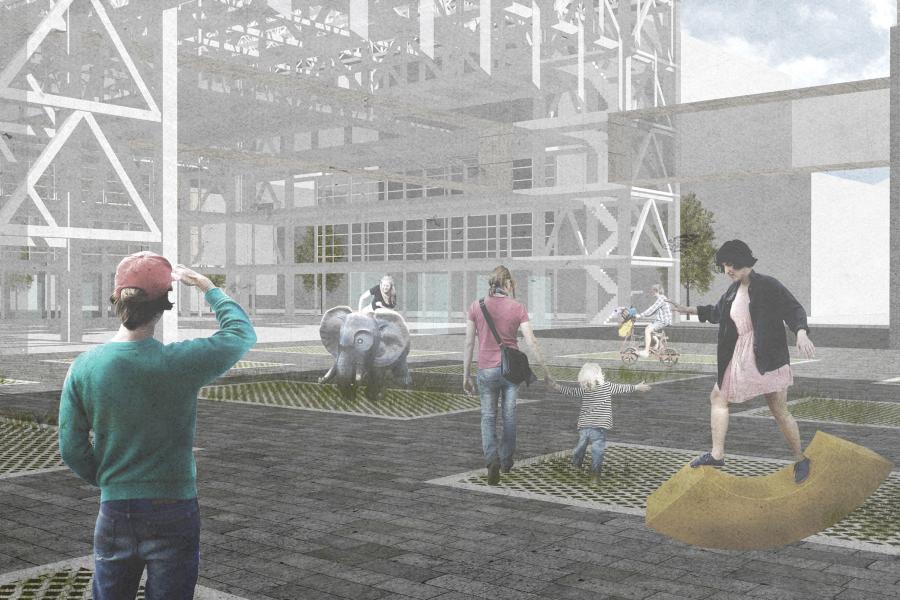
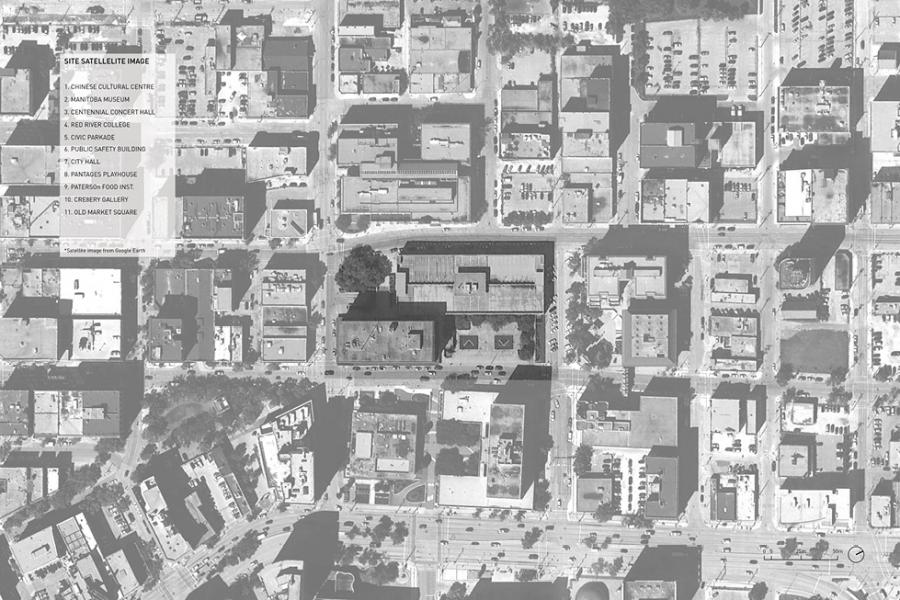
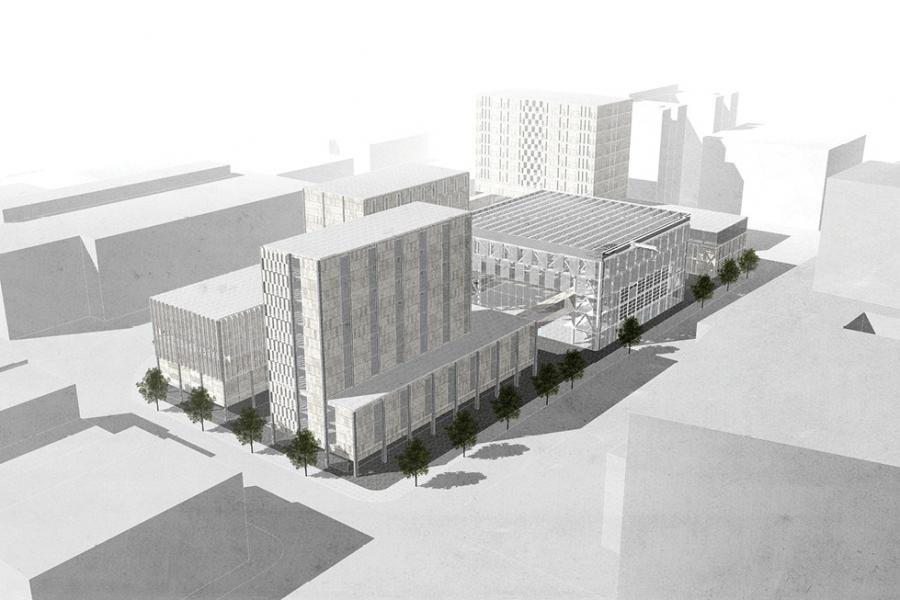
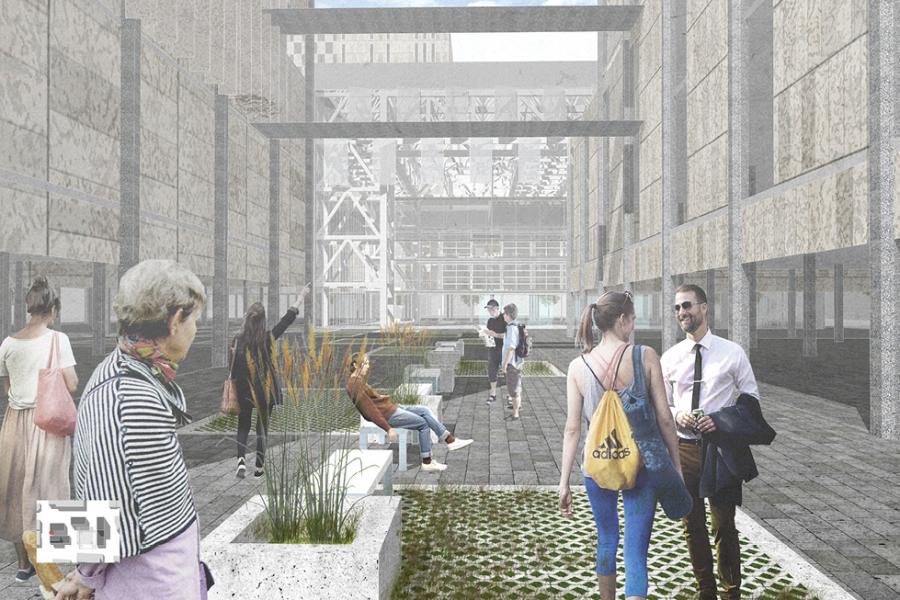
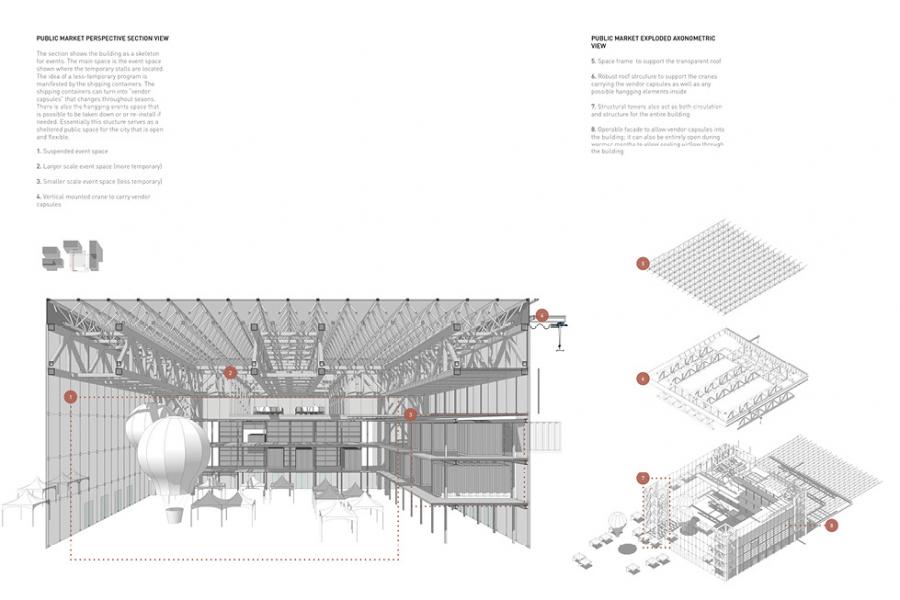
Scale City: Experiencing Human Scale in the Urban Context
The design thesis aims to explore ideas about scale in architecture and urban design. It inquires on the meaning of “human scale” in the context of experiencing the urban environment and how scale can aid with a dweller’s relationship with the surroundings. From Vitruvius to Le Corbusier, the study of the human body and its dimensions have been present through history. More recent sources such as Licklider, Orr, and Makower, however, say that scale is dominantly an experiential value: one will not be able to see the dimensions of an object but one can have an impression of its size. Scale is about the quality of space as well as the individual’s relationship with it.
The site is the Public Safety Building (PSB) and Civic Parkade land situated in the downtown civic core of Winnipeg. The proposed project is an urban development which includes several buildings that offers to densify everyday activities on site. It was the chosen site because of its current desolate condition. Few surrounding lots are “developed” as parking spaces contributing to the fragmented experience of the city. Moreover, modern design notions of vehicle flow efficiency lead to the prioritizing of roads instead of pedestrian streets. The results are wider lanes for traffic and unpleasant sidewalks. One can described the site as more active in the past - a place of meeting, exchange, and protest. Now, however, it lacks the presence of people. The streets are relatively unwelcoming to the pedestrian and therefore discouraging to inhabit.
Urban design ideas such as urban form, proposals of public spaces, pedestrian alleys and improving streets, is thought about in relation to the project. The subject of the architectural exploration will be the Public Marketplace building. Precedents such as Fun Palace by Cedric Price and Pompidou Centre by Renzo Piano and Richard Rogers have significant influences on the project. Price’s idea of flexibility of building program (anti-permanence/temporality) is manifested through the “plug-in” components of the Public Marketplace. The more open space has multiplicity of use for cultural fairs and other events. Both precedents aims to create space for the people and the spontaneity of the city. Overall, the project attempts to introduce different scaled experiences to the dweller: from urban scale, architectural scale, and human scale.
